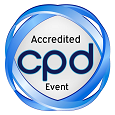
Kachaporn Nimdet
Suratthani hospital, Thailand
Title: A model of congenital heart disease screening in elementary school children
Biography
Biography: Kachaporn Nimdet
Abstract
Congenital heart disease (CHD) is the most severe form of congenital malformations which increases the morbidity and mortality risks. Early diagnosis not only provides optimal therapy but can also prevent complications. The avialability of pediatricians is scarce, especially in rural areas in Thailand. Therefore, healthcare officers and nurses who work in primary healthcare hospitals have an important role on healthcare services in communities, for example, to treat uncomplicated diseases, provide vaccination and perform yearly physical examination in elementary schools. Accordingly, implement CHD screening through existing healthcare services should enhance the possibility of early diagnosis. The CHD screening model was established to provide physical examination skills related to cardiovascular diseases for healthcare officers and nurses, for early CHD detection. Three steps of the model were: 1) participation in the training program, consisting of the study of common CHD, clinical manifestation and practical examination; 2) screening in the elementary school that they were responsible for during the study period; and 3) re-evaluation the children suspected of having CHD by pediatric cardiologists. At the screening process, checklists of common manifestations, including the history and physical examination of CHD, were provided to facilitate the screening. Of 23,633 children in 179 elementary schools, a total of new diagnosed 38 CHD children were detected by healthcare officers and nurses and confirmed diagnosis by pediatric cardiologists. One year after participation, five more CHD cases were recognized and treated. This study emphasizes that utilization of an effective model provides the opportunity of detection and optimal therapy for CHD.

